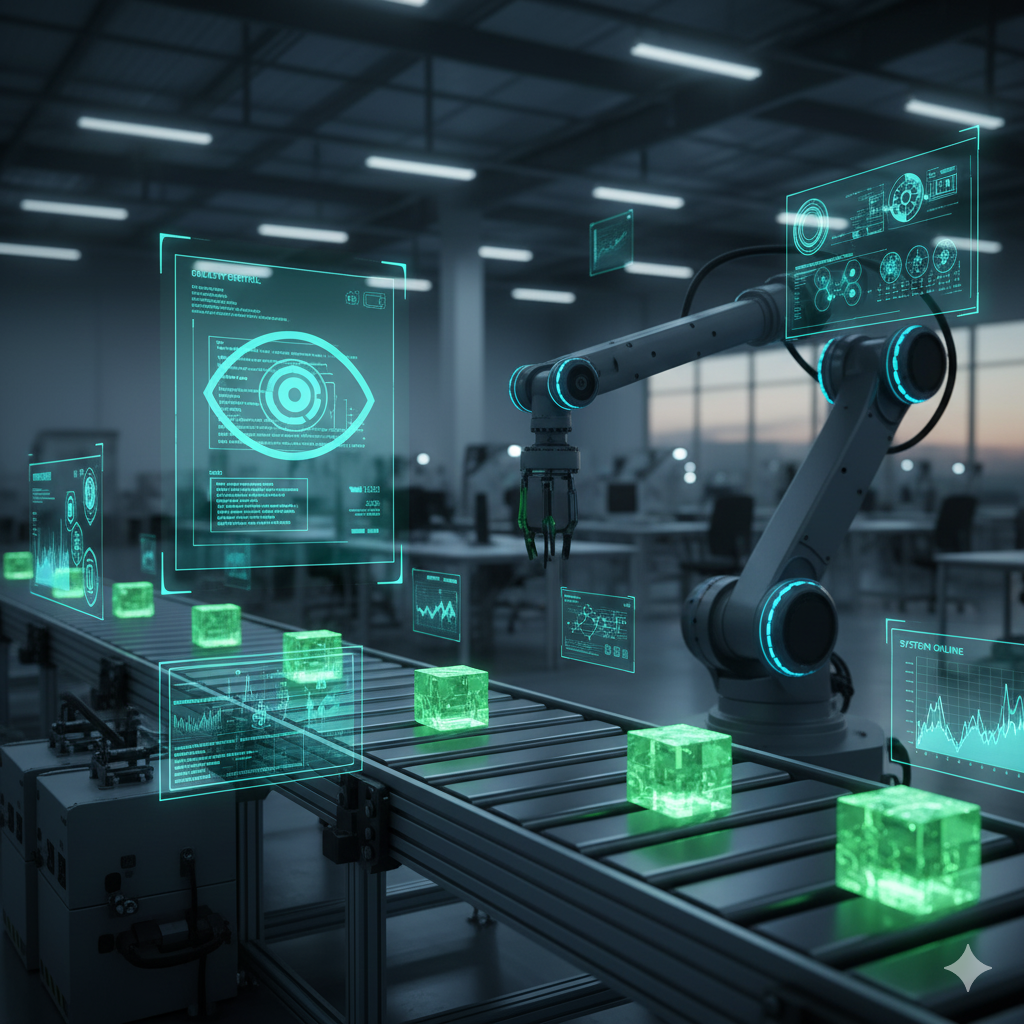© Copyright Selarastech 2022 - All Rights Reserved

Industrial sectors worldwide are experiencing unprecedented transformation. Manufacturing plants, mining operations, logistics centers, and utility companies face mounting pressure to boost productivity while maintaining stringent safety standards. The challenge is compounded by global labor shortages, rising operational costs, and increasingly complex supply chains.
Enter computer vision technology – an artificial intelligence breakthrough that's reshaping how industries operate. This powerful AI subset enables machines to process visual information with human-like accuracy, delivering game-changing capabilities for industrial automation and operational excellence.
Computer vision in industry represents a paradigm shift from traditional automation systems. While conventional industrial automation relies on predetermined rules and basic sensor inputs, computer vision technology uses advanced machine learning algorithms to interpret visual data in real-time.
This industrial AI solution processes images and video streams through deep learning neural networks, enabling machines to:
- Recognize complex patterns and objects - Detect subtle anomalies and defects
- Monitor dynamic environments continuously
- Make intelligent decisions based on visual input
- Adapt to changing conditions without reprogramming
The technology's contextual understanding capabilities make it superior to rule-based systems, particularly in environments where conditions vary or unexpected situations arise.
Manufacturing quality control has been revolutionized by computer vision systems. Traditional manual inspection processes are inherently inconsistent, time-consuming, and prone to human error.
Modern visual inspection systems can:
These automated quality inspection systems operate at production speeds, scanning hundreds of products per minute while maintaining consistent accuracy rates above 99%. The result is dramatically reduced waste, fewer product recalls, and improved customer satisfaction.
Equipment failures cost industries billions annually through unplanned downtime and emergency repairs. Computer vision for predictive maintenance transforms this reactive approach into a proactive strategy.
Industrial vision systems monitor equipment health through:
By identifying early warning signs, maintenance teams can schedule interventions during planned downtime, extending equipment lifespan and reducing total maintenance costs by up to 30%.
Industrial safety remains a top priority, with computer vision technology providing unprecedented monitoring capabilities.
AI-powered safety systems can:
These computer vision safety systems have proven particularly valuable in high-risk environments like chemical plants, construction sites, and mining operations, where split-second decisions can prevent serious accidents.
Warehouse automation and inventory tracking have been transformed by computer vision technology.
Modern systems provide:
These visual AI systems integrate seamlessly with warehouse management systems (WMS) and enterprise resource planning (ERP) platforms, providing accurate, up-to-date inventory data that improves decision-making and reduces operational costs.
Computer vision enables next-generation industrial robotics by providing machines with sophisticated visual perception.
Applications include:
These vision-guided robots can handle previously impossible automation tasks, expanding the scope of industrial automation into areas requiring human-like visual processing.
Computer vision technology delivers measurable improvements in operational efficiency:
The financial impact of computer vision implementation includes:
Computer vision safety systems create safer work environments by:
Successful computer vision deployments can be scaled across:
Successful computer vision deployment requires robust technical infrastructure:
Effective computer vision systems depend on quality data:
Connecting computer vision systems with existing operations involves:
Several technological advances will further enhance industrial computer vision:
Different industries are developing specialized computer vision applications:
Computer vision technology has evolved from an experimental concept to an essential industrial tool. Organizations implementing these systems report significant improvements in efficiency, safety, and profitability. The key to success lies in strategic planning, proper infrastructure investment, and partnering with experienced technology providers.
As computer vision continues advancing, early adopters will maintain competitive advantages through smarter operations, reduced costs, and enhanced safety performance. The future belongs to organizations that embrace visual AI as a core component of their industrial strategy.
Companies ready to transform their operations through computer vision technology should begin with pilot projects in high-impact areas, gradually scaling successful implementations across their facilities. With proper planning and execution, computer vision delivers measurable returns on investment while positioning organizations for continued success in an increasingly automated industrial landscape.
Ready to explore computer vision solutions for your industrial operations?
Contact our experts to discuss how this transformative technology can drive your business forward through improved efficiency, safety, and profitability.